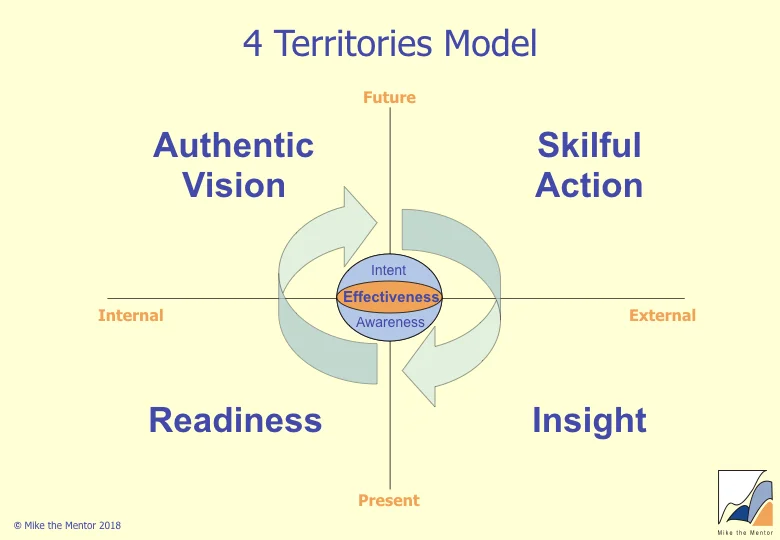Faulty Thinking
/What we feel and how we act is substantially caused by our views about events and people rather than by the events and people themselves. This idea is not new. The philosopher Epictetus in the first century AD said, "Men are disturbed not by things but by the views they take of them."
Applying the ABC model helps people replace limiting or negative thinking with alternatives that will help them be happier and more successful. In this model, an Activating event leads to emotional and behavioural Consequences, with the emotional consequences being created by Beliefs. The problem is that we often believe that the As directly cause the Cs and don't notice the intervening Bs. At the heart of this approach is recognising that it is wrong thinking that produces C, identifying what that thinking is, and changing it.
Assessment - Recognising and Identifying the Wrong Thinking
To apply the ABC model, start by identifying your current logic ("[A] made me feel [C]"). Then identify what beliefs created the link between A and C ("What thoughts about [A] were going through my head at the time?", "Why did I feel so [C] about [A]"). Check that the thoughts and beliefs uncovered would lead to the consequences you experienced. Repeat this process a number of times until an accurate map of the ABC process has been created.
So, in greater detail, to carry out an ABC assessment:
- Choose a specific example of the problem situation
- Identify the C. Ask yourself: "How did I feel in that situation?"
- Identify the A. Ask yourself: "What happened?", "What led up to that?"
- Check what you have written captures the problem situation by summarising it to yourself: "I felt [C] because [A]" or "[A] made me feel [C]"
- Identify the B: Ask yourself: "What thoughts about [A] were going through my head at the time?" or "Why did I feel so [C] about [A]" or "What did [A] mean that I felt so [C] about it?" Aim to get a number of inferences and at least one evaluation (see below).
- Check that the thoughts you have written about the event would lead you to feel the way you did at C.
Repeat steps 1 to 6 for another situation.
Once you have an ABC assessment for a few situations, look for generalised core belief underlying the more specific beliefs.
In some cases, it may be easier to reverse steps 2 and 3 above and start with the A.
Types of A
An A event can be anything a person reacts to. The most straightforward are present moment situations or situations that are remembered or imagined. But they can also be your own feelings and behaviours or your own thoughts and beliefs . In describing As, be as factual and evidence-based as possible. The opinion or judgement part of an A is actually a B.
Types of B
There are two types of B you can have about As:
- Inferences are hypotheses about what events mean and can be true or false. An inference has the form "If X, then Y", meaning that whenever X happens, Y will follow. X is the factual part; Y is the part that goes beyond the evidence. Quite often several inferences will be connected together in a chain ("If X, then Y1, then Y2, then ..."). By themselves inferences do not lead to emotional consequences. In the example in the box, I infer or hypothesise from the A (colleague argues strongly and passionately against my proposal) that he thinks my ideas are stupid. This by itself will not bother me. For it to do so, I would need to go on to evaluate that him thinking my ideas are stupid is bad for me in some way.
- Evaluations are what cause inferences to create emotional consequences. Evaluations are judgements about whether something is good or bad, desirable or undesirable, wonderful or horrible.
Types of C
There are two types of C:
- Emotional Cs: People respond emotionally to events, feeling happy when things go well and sad (for example) when things go badly. The emotional C will usually be associated with bodily sensations and reactions.
- Behavioural Cs: The emotional C will usually be associated with a behavioural C which is your way of coping with the emotion. There are three primary negative emotions: anger, anxiety and depression. The ways of coping with each are:
- Anger; overt or muted aggressive behaviour
- Anxiety: avoidance or defensive behaviour
- Depression: inactivity and withdrawal.
Change
The final step is to choose more useful Bs. With inferences, the simplest approach is to simply look for more helpful alternatives to your habitual thoughts. For example, instead of believing "I must always do a perfect job", choose to believe "I must do a good enough job".
If the unhelpful beliefs are strong, then the evidence for them will need to be systematically undermined. This can include examining the evidence, seeking evidence that will falsify the inference; exploring alternative conclusions that might be drawn from evidence or, when evidence is difficult to find, looking for alternative inferences and so realise that it is quite arbitrary which of these alternatives should be believed. More realistic and supportive beliefs are than chosen. Choosing more realistic inferences is powerful, but one is still vulnerable to negative evaluations. Since evaluations are assertions of good and bad, they can only be disputed if they are exaggerated. If they aren't (ie, they are realistic) then it is a matter of facing up to accepting an uncomfortable truth about oneself. But, if the evaluation is exaggerated, it can be disputed. For example, if the person evaluates the whole of themselves negatively ("I'm completely useless") rather than just a part ("I'm useless at presentations") or evaluates themselves absolutely ("I'm always useless"), then this can be disputed since such exaggerated evaluations can never be true.
Through this process of identifying, dismantling and rebuilding personal beliefs, more effective and productive ways of behaving can be established, and we can enjoy more positive feelings.
The ABC model is described at length in Cognitive-behavioural Counselling in Action.

